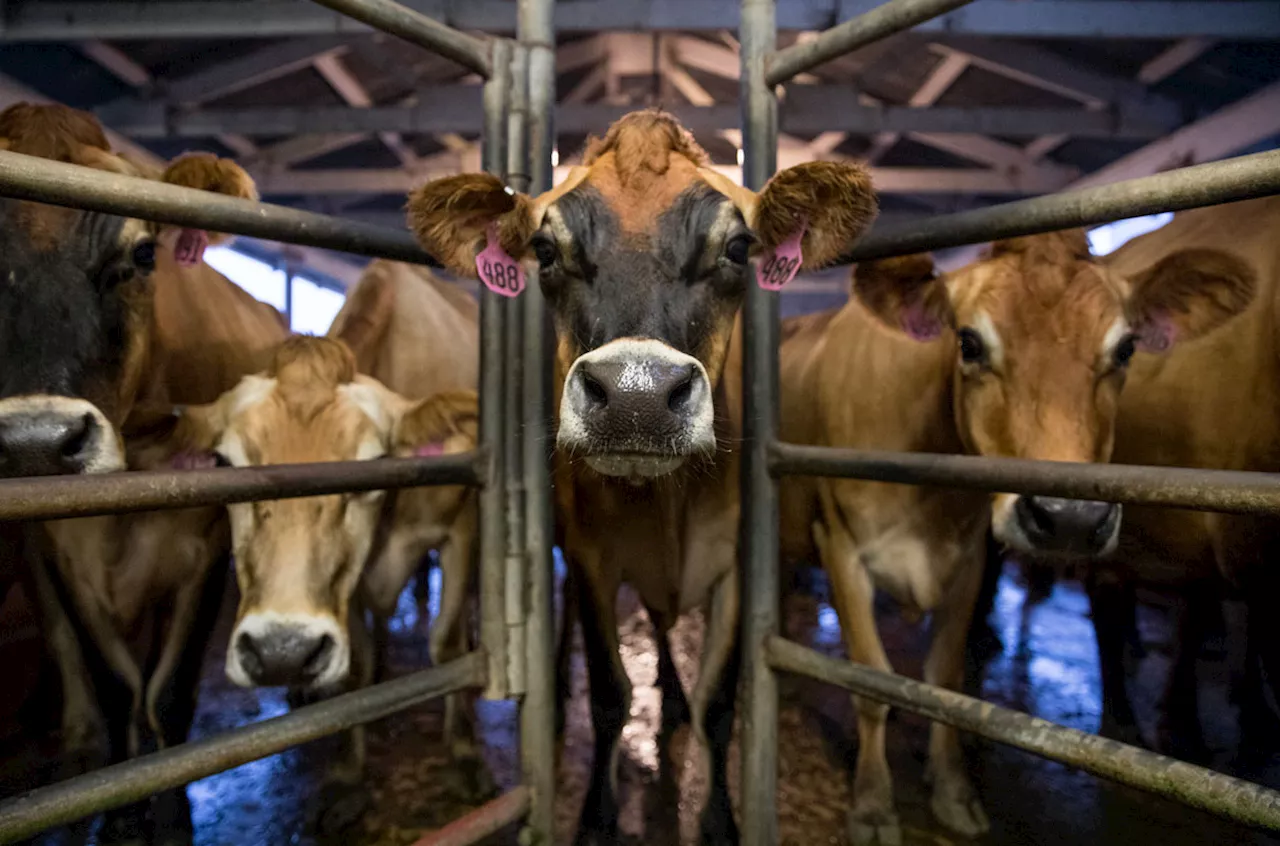Novel effort comes as study finds key receptor for avian flu virus in udders
As an avian flu virus continues to infect dairy cattle in the United States, researchers are hoping to examine its impact on the animals by deliberately infecting them in labs with high biosafety levels.The avian influenza virus that has been infecting dairy cows and spreading alarm in the United States was expected to reach Germany this week. But that’s actually good news.
As he and other groups set up their controlled infection experiments in cattle, a preprint posted last week gives a possible explanation for why the virus seems to thrive in the cow udder—and therefore ends up in milk. Influenza viruses bind well to certain cell surface carbohydrates called sialic acids, which vary by species. Avian viruses latch onto duck and chicken sialic acids, whereas human influenza viruses latch onto certain mammalian sialic acids.
Human eyes may be uniquely vulnerable to the strain because they contain the same H5N1 receptor found in ducks and cow udders. But the rapid viral growth in cow udders raises concerns that the avian virus could learn to latch on to the mammal-specific virus receptor also in the udder, says Tom Peacock, an influenza virologist at the Pirbright Institute. “It seems a good reason to get this eradicated from cattle as soon as possible.
Richt, who runs one such facility, plans to inoculate the nose and mouth of male and female cows with the same strain Diel sent Beer. “Then we will look at what's happening within the animals,” he says. “We will kill some of them after 4 or 5 days and look where the virus is in the body.” Others will be watched for weeks to see if they develop antibodies to H5N1 and how long they shed the virus in various ways.
Some scientists are anxiously looking for signs of the bird flu becoming human-adapted by tracking the mutations seen in the viral sequences from infected cows. A few, such as one called 631L, have already been found and appear to make H5N1’s polymerase, the enzyme the virus makes to copy its genome, work better in mammals. But similar mutations have been seen in H5N1 cases in other animals, and there has been little other evidence of mammalian adaption so far, Peacock says.
United States Latest News, United States Headlines
Similar News:You can also read news stories similar to this one that we have collected from other news sources.
 Based on C.J. Sansom's novel, 'Shardlake' sets a murder mystery in Tudor EnglandBased on the first of C.J. Sansom's Tudor-era murder mystery novels, 'Shardlake,' premiering Wednesday on Hulu, follows a lawyer turned reluctant detective.
Based on C.J. Sansom's novel, 'Shardlake' sets a murder mystery in Tudor EnglandBased on the first of C.J. Sansom's Tudor-era murder mystery novels, 'Shardlake,' premiering Wednesday on Hulu, follows a lawyer turned reluctant detective.
Read more »
 Pete Wentz and the Dying Inside Team Preview Their New Graphic NovelVault's Dying Inside is now available to pre-order.
Pete Wentz and the Dying Inside Team Preview Their New Graphic NovelVault's Dying Inside is now available to pre-order.
Read more »
 Stephen King Addresses Baby Reindeer's Similarities To His Own Novel Misery & Its Movie AdaptationRichard Gadd in Baby Reindeer juxtaposed with James Caan in Misery
Stephen King Addresses Baby Reindeer's Similarities To His Own Novel Misery & Its Movie AdaptationRichard Gadd in Baby Reindeer juxtaposed with James Caan in Misery
Read more »
 Novel genetic plant regeneration approach without the application of phytohormonesConventional plant regeneration approaches by cell culture require the external application of plant growth regulators, including hormones. However, optimizing culture conditions can be laborious.
Novel genetic plant regeneration approach without the application of phytohormonesConventional plant regeneration approaches by cell culture require the external application of plant growth regulators, including hormones. However, optimizing culture conditions can be laborious.
Read more »
 Turtles All the Way Down Flattens John Green’s NovelA teen with OCD gets flattened in this unconvincing adaptation of John Green's YA novel. Our Turtles All the Way Down review:
Turtles All the Way Down Flattens John Green’s NovelA teen with OCD gets flattened in this unconvincing adaptation of John Green's YA novel. Our Turtles All the Way Down review:
Read more »
 A closer look at the novel '2034' and the film 'Civil War'I finally got around to reading '2034,' which is a bit of fiction that describes what a conflict between China and the United States in 2034 might look like.
A closer look at the novel '2034' and the film 'Civil War'I finally got around to reading '2034,' which is a bit of fiction that describes what a conflict between China and the United States in 2034 might look like.
Read more »
